With many smart telescopes already on the market and more on the way, it’s becoming a challenge to decide which smart telescope best suits your individual needs. In this Best Buy guide, I compare the Unistellar EVscope v2, Unistellar Equinox 2, Vaonis Stellina, Vaonis Vespera (Classic edition, Vespera II, and Vespera Pro), ZWO Seestar S50, and Dwarf II smart telescopes. Based on factors such as price, telescope type, camera, ease of use, real-world photo quality, storage capacity, weight, and size, this guide aims to help you make an informed decision. I conclude the comparison by discussing which smart telescopes are the best in their price class, ranging from $500, $1500, $2500, and a high-end $4000. I’ll be updating this Best Buy guide periodically as more smart telescopes become available.
The Rise of Smart Telescopes: Simplifying Stargazing and Astrophotography for All
Smart telescopes are becoming increasingly popular. The fundamental concept behind smart telescopes is to merely switch on the device, connect it to an APP on your smart device (phone/tablet), select a celestial object of interest, and then sit back and relax while the smart telescope handles all the challenging aspects for you. This includes locating the object of your interest in the night sky, tracking the object to keep it centered in your telescope’s field of view, and providing you with an excellent view of that object on your smart device (phone/tablet/iPad). Companies like Unistellar, Vaonis, and Dwarflab were among the first to develop smart telescopes with the primary goal of simplifying stargazing and astrophotography for ordinary people who don’t wish to invest days, months, or years mastering all the intricacies of our captivating hobby known as astrophotography. Due to its popularity, more established brands in the amateur astrophotography niche like ZWO, and more recently Celestron, have developed or are developing their smart telescopes.
Smart Telescopes Best Buy Guide: Choosing Your Celestial Companion
The primary objective of the Smart Telescope Best Buy Guide is to assist individuals in choosing the most suitable smart telescope. In this guide, I define a telescope as “smart” when the telescope is capable of autonomously locating, tracking, and capturing images of celestial objects in the night sky. This excludes traditional telescopes designed for naked-eye stargazing with an eyepiece. All featured telescopes are Wi-Fi-enabled and controllable through apps compatible with popular platforms like iOS and Android.
At present, this smart telescope guide includes the following models: Unistellar EVscope v2, Unistellar Equinox 2, Vaonis Stellina, Vaonis Vespera (Classic edition, Vespera II, and Vespera Pro), ZWO Seestar S50, and Dwarf II. The blog will be regularly updated to incorporate new smart telescopes as they become available.
I’ve taken various factors into account to help you find the ideal smart telescope:
- Price
- Telescope specifications (aperture, focal length, f/ratio)
- Camera sensor details (resolution, image scale, field of view)
- APP quality for smart telescope control
- Picture quality
- Photo and Video formats
- Storage capacity
- Weight and Size
- Astrophotography filters
You can find my recommendations for the best smart telescopes in different price ranges here:
- Best Smart Telescope for $500
- Best Smart Telescope for $1500
- Best Smart Telescope for $2500
- Best Smart Telescope for $4000
I created this table for like-minded people who like statistics and numbers, with links to trustworthy telescope shops across the EU and the USA.
Smart Telescope Comparison Table
| wdt_ID | Name | Price | USA1 | USA2 | EU | Telescope type | Glass / mirror type | Aperture | Focal Length | f/ratio | Sensor type | Resolution | Megapixels | Pixel size | Image scale | Field of View (Native) | Field of View (max) | Photo formats | Video formats | APP type | OS | connection | APP ease of use | Storage | Battery life | Data transfer | Size | Weight |
|---|---|---|---|---|---|---|---|---|---|---|---|---|---|---|---|---|---|---|---|---|---|---|---|---|---|---|---|---|
| 1 | Vaonis Vespera | 1.499,00 | Link | Link | Link | Quadruplet Refractor | S-FPL52 (ED) | 50 | 200 | 4,0 | SONY IMX 462 | 1920 x 1080 | 2,0 | 2,90 | 2,99 | 1.6°x0.9° | 3.2°x1.8° 2.4°x2.4° | jpg, fits, tiff | Singularity | Android, iOS | Wi-Fi | 5/5 | 10 | 8 | Proprietary | 48 x 20 x 9 | 5,0 | |
| 2 | Vaonis Vespera II | 1.590,00 | Link | Link | Link | Quadruplet Refractor | S-FPL52 (ED) | 50 | 250 | 5,0 | Sony IMX 585 | 3840 x 2160 | 8,3 | 2,90 | 2,39 | 2.5°x1.4° | 4.33°x2.43° 3.25°x3.25° | jpg, fits, tiff | Singularity | Android, iOS | Wi-Fi | 5/5 | 25 | 4 | USB-C | 48 x 20 x 9 | 5,0 | |
| 3 | Vaonis Vespera Pro | 2.499,00 | Link | Quadruplet Refractor | S-FPL52 (ED) | 50 | 250 | 5,0 | Sony IMX 676 | 3536 x 3536 | 12,5 | 2,00 | 1,60 | 1.6°x1.6° | 3.4°x2° 2.56°x2.56° | jpg, fits, tiff | Singularity | Android, iOS | Wi-Fi | 5/5 | 225 | 11 | USB-C | 48 x 20 x 9 | 5,0 | |||
| 4 | Vaonis Stellina | 3.999,00 | Link | ED Doublet Refractor | S-FPL51 (ED) | 80 | 400 | 5,0 | Sony IMX 178 | 3096 x 2080 | 6,4 | 2,40 | 1,24 | 1°x0.7° | 2° x 1,4° 1,7° x 1,7° | jpg, fits, tiff | Singularity | Android, iOS | Wi-Fi | 5/5 | 10 | 5 | Proprietary | 49 x 39 x 13 | 11,0 | |||
| 5 | Seestar S50 | 499,00 | Link | Link | Link | APO triplet Refractor | (ED) | 50 | 250 | 5,0 | SONY IMX 462 | 1080 x 1920 | 2,0 | 2,90 | 2,39 | 0.7°x1.3° | 0.7°x1.3° | jpg, fits, tiff | MP4, RAW | Seestar | Android, iOS | Wi-Fi | 5/5 | 64 | 6 | USB-C | 14 x 13 x 26 | 3,0 |
| 6 | Dwarf II | 459,00 | Link | Link | Telephoto lens | photolens | 24 | 100 | 4,2 | Sony IMX 415 | 3840 x 2160 | 8,0 | 1,45 | 2,99 | 3.2°x1.8° | 3.2°x1.8° | jpg, fits, tiff | MP4 | Dwarflab | Android, iOS | Wi-Fi | 3/5 | 64 | 4 | USB-C | 20 x 5 x 13 | 1,2 | |
| 7 | Unistellar EVscope 2 | 4.966,00 | Link | Link | Newtonian Reflector | Mirror | 114 | 450 | 4,0 | Sony IMX 347 | 2088 x 1536 | 7,7 | 1,45 | 0,66 | 0.34°x 0.45° | 0.34°x 0.45° | jpg, fits, tiff, png | Unistellar | Android, iOS | Wi-Fi | 4/5 | 64 | 10 | USB-C | 77 x 33 x 26 | 9,0 | ||
| 8 | Unistellar Equinox 2 | 2.499,00 | Link | Link | Newtonian Reflector | Mirror | 114 | 450 | 4,0 | Sony IMX 347 | 2048 x 1536 | 6,2 | 1,45 | 0,66 | 0.34°x 0.45° | 0.34°x 0.45° | jpg, fits, tiff, png | Unistellar | Android, iOS | Wi-Fi | 4/5 | 64 | 11 | USB-C | 65 x 23 x 12 | 7,0 |
Price
The Dwarf II Smart Telescope and ZWO Seestar S50 stand out as the most budget-friendly options. Priced at $499, the ZWO Seestar S50 competes with the Dwarf II, available at $419 for the classic version and $539 for the deluxe version, inclusive of an extra rechargeable battery, solar filters, and a UHC filter. Both Dwarflab and ZWO generously provided their smart telescopes for comprehensive reviews. Detailed information on these reviews and tutorials for operating the Dwarf II can be found here, and for the Seestar S50, here.
The Vaonis Vespera is offered in various versions: $1499 for the classic, up to $1599 for the Vespera II, and $2499 for the Vespera Pro. Vaonis graciously supplied their classic Vaonis Vespera for testing, and a thorough review and tutorial are available here. The new Unistellar Equinox 2 is priced at $2499, while the Vaonis Stellina commands a higher price tag of $3999, and the Unistellar EVscope 2 tops the range at $4899. Do these price variations correlate with differences in quality? Let’s explore further to find out.
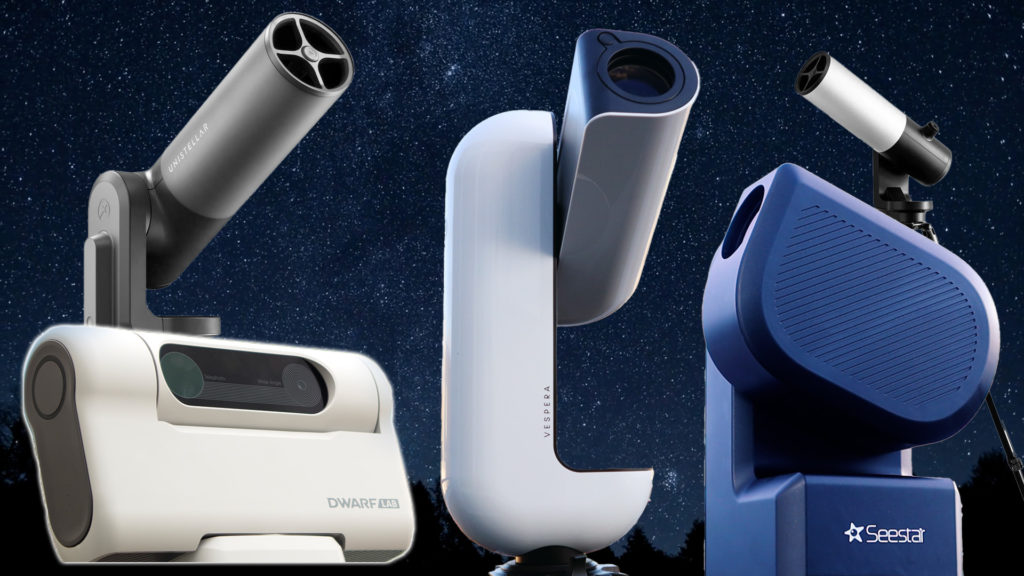
back to criteria overview
Telescope types
Dwarf II: telephoto lens
Despite being labeled as a telescope, the Dwarf II stands out in this overview as the only smart device equipped with a telephoto lens rather than a traditional telescope design for capturing night sky images. The Dwarf II combines this telephoto lens with a widefield lens, making it suitable for both daytime nature and wildlife photography as well as nighttime astrophotography.
Seestar S50 and Vaonis Vespera/Stellina: Refractors
The ZWO Seestar S50, the Vaonis Vespera (classic/II/Pro), and the Vaonis Stellina belong to the category of refractor telescopes, utilizing lenses to gather and focus light. The Vaonis Stellina stands out as a two-lens ED doublet refractor telescope, incorporating Extra-low Dispersion (ED) glass elements in its lens system. The use of ED glass effectively reduces chromatic aberration, resulting in sharper and more color-accurate images compared to standard refractors.
Notably, the more economical ZWO Seestar S50 adopts a triplet Refractor Telescope design, featuring a three-lens system, with one extra-low dispersion (ED) element. The additional lenses in a triplet, compared to a doublet, contribute to further correction of chromatic aberration, enhancing image quality and color correction. The Vaonis Vespera (classic/II/Pro) adopts a Quadruplet Refractor Telescope design, incorporating a four-lens system with an S-FPL52 ED lens element. The additional lens elements in a quadruplet design, exceeding those in a triplet or doublet, significantly enhance color correction, resulting in exceptionally high-quality images in the field of astrophotography.
Unistellar EVscope 2 and Equinox 2: Newtonian Reflectors
The Unistellar EVscope 2 and the Unistellar Equinox 2 both fall into the category of reflector telescopes, relying on mirrors to collect and focus light. Typically, a reflector telescope includes a curved primary mirror and a secondary mirror. Normally, reflector telescopes are popular choices in astrophotography as they provide a large aperture at a low cost. Notably, Unistellar’s telescopes stand out as among the pricier options in the smart telescope market.
An interesting feature is that the optical tubes of both the Unistellar EVscope 2 and Equinox 2 are prime-focus single-mirror telescopes, devoid of a secondary mirror or a coma corrector. In this design, the image directly reflects from the primary mirror to the camera sensor. Manual collimation is required for Unistellar smart telescopes, and Unistellar provides specific videos on how to achieve this. Despite these challenges, reflectors, with their larger apertures, excel in deep-sky astrophotography, capturing ample light for detailed celestial images. Reflectors do come with challenges, such as coma aberration distorting star shapes at the edge of the picture, and the presence of diffraction spikes in the stars affecting image aesthetics.
Aperture, focal length, and f/ratio
In astrophotography, aperture and focal length play pivotal roles. The aperture, the diameter of the lens or mirror of a telescope, determines light-gathering capability. A larger aperture collects more light, crucial for imaging faint celestial objects. The Unistellar Equinox 2 and the EVscope 2, both Newtonian reflectors, boast the largest apertures at 114mm, trailed by the Vaonis Stellina at 80mm. The Vaonis Vespera and Seestar S50 possess 50mm apertures, while the telephoto lens on the Dwarf II is 28mm.
Focal length, the distance from the lens or mirror to the image plane (i.e. eyepiece or camera sensor), influences magnification and field of view. A longer focal length enhances magnification, ideal for detailed photos of distant objects. Both the Unistellar Equinox 2 and EVscope 2 lead with a substantial 450mm focal length, succeeded by the Vaonis Stellina at 400mm. ZWO’s Seestar S50, as well as the Vaonis Vespera II and Vespera Pro, feature a 250mm focal length, while the classic Vaonis Vespera has a 200mm focal length. Lastly, the Dwarf II telephoto lens has the shortest focal length in this comparison at 100mm.
Finally, the f/ratio, or focal ratio, is a crucial parameter in astrophotography telescopes, representing the relationship between the telescope’s focal length and aperture (f/ratio = focal length/aperture). In astrophotography, a lower f/ratio is often advantageous as it allows more light to reach the camera sensor in a shorter time, enabling quicker exposures to capture faint celestial details of deep-sky objects. However, for bright solar system bodies like our Moon and the planets, a higher f/ratio and a longer focal length are beneficial. In terms of the f/ratio, all smart telescopes are pretty evenly matched. The Unistellar EVscope 2, the Equinox 2, and the classic Vaonis Vespera have the lowest f/ratio of 4. The Dwarf II comes in at a f/ratio of 4.2, and the Seestar S50, as well as the Vaonis Vespera II, Pro, and Stellina, exhibit a f/ratio of 5.
back to criteria overview
Camera sensors: Resolution, Image Scale, and Field of View
Sony STARVIS (IMX) sensors
All the smart telescopes featured in this overview come equipped with Sony STARVIS IMX sensors. Sony’s STARVIS CMOS image sensors use back-illuminated pixel technology and exhibit remarkable sensitivity, rendering them perfectly suited for applications such as astrophotography, security, and other scenarios with low-light conditions.
Resolution (MP)
Resolution in astrophotography refers to the level of detail captured in an image. It is determined by the combination of the telescope’s aperture, the resolution of the camera, and the image scale. Higher resolution allows for finer details in celestial objects. In terms of camera resolution, the Vaonis Vespera Pro features the largest sensor at 12.5 megapixels (3536 x 3536 pixels), followed by the Vaonis Vespera II and the Dwarf II, both at 8 megapixels (3840 x 2160). The Unistellar EVscope2 offers 7.7 megapixels (2088 x 1536), trailed by the Vaonis Stellina at 6.4 megapixels (3096 x 2080), and the Unistellar Equinox 2 at 6.2 megapixels (2048 x 1536). The classic version of the Vaonis Vespera and ZWO’s Seestar S50 boasts the smallest resolution at 2 megapixels (1920 x 1080). It’s noteworthy that ZWO positioned the sensor in portrait mode to align with a smartphone screen held in portrait orientation. The resolution of the camera, however, doesn’t tell the whole story in astrophotography…
Image scale
In addition to camera resolution, the image scale relates to the amount of sky covered by each pixel of the camera sensor. Image scale is expressed in arc seconds. An arc second is a unit of angular measurement in astronomy, representing 1/3600th of a degree. It is used to quantify the apparent size of celestial objects in the night sky. For example, the Moon, on average, has an angle of about 1800 arcseconds, 30 arc minutes, or 0.5 degrees. Put differently, 1 degree of sky is equal to 60 arc minutes, and 3600 arc seconds. One rule of thumb in astrophotography is that one to two arc seconds per pixel is ideal, as it avoids large, bloated stars that are often present in sub-arc second image scales, and tiny, blocky stars that are often present when the image scale is higher than two 2 arc seconds per pixel. The best image scale also depends on the apparent size of the celestial object and personal preference.
The Unistellar EVscope 2 and the Equinox 2 achieve the smallest, most detailed imaging scale, both boasting 0.66 arc seconds per pixel. The Vaonis Stellina achieves 1.24 arc seconds, while the Vaonis Vespera Pro boasts 1.60 arc seconds. The Vaonis Vespera II and the Seestar S50 both have 2.39 arc seconds, and the classic version of the Vaonis Vespera and the Dwarf II exhibit the highest, less detailed image scale at 2.99 arc seconds.
Field of View
The field of view in degrees represents the portion of the sky visible in a single image. It is influenced by the telescope’s focal length and the camera sensor size. A wider field of view is advantageous for capturing expansive nebulae or star clusters, while a narrower field is more suitable when gazing at smaller celestial objects, such as distant galaxies. For example, one of the largest apparent objects in the night sky is our neighboring Andromeda Galaxy, which covers roughly 3 by 1 degrees in our night sky, whereas galaxies such as the whirlpool galaxy only cover about 11×7 arc minutes (i.e. 11/60th by 7/60th of a degree).
Looking at the field of view, the Dwarf II covers the largest piece of the night sky with a native field of view of 3.2°x1.8°, followed by the Vaonis Vespera II with an FoV of 2.5°x1.4°. The Vaonis Vespera Pro has a native FoV of 1.6°x1.6°, the classic Vaonis Vespera 1.6°x0.9°, and the Vaonis Stellina covers 1°x 0.7°. The Seestar covers a similar 0.7°x1.3° of the night sky in portrait mode, and the Unistellar EVscope 2 and the Equinox 2 both cover the smallest field of view of the night sky, at 0.34°x 0.45° – with just enough room to spare to fit the full moon. The picture below shows the approximate native focal lengths for each of the smart telescopes with the Andromeda Galaxy (M31; approx. app. size, 3° x 1°) in the background. Calculations were made using astronomy.tools.
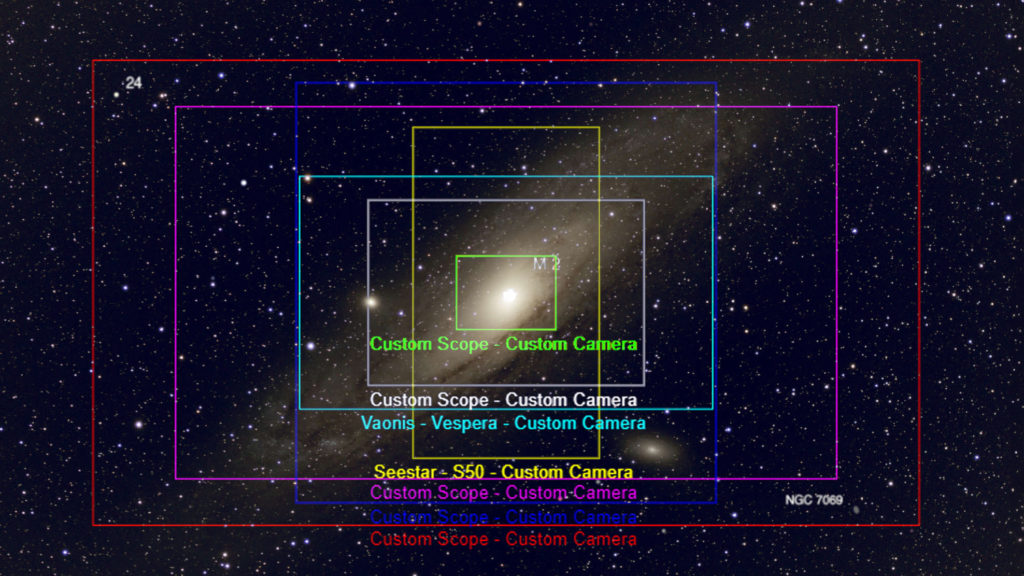
Importantly, all Vaonis smart telescopes come with a special trick, the unique CovalENS mode, that can create a panorama view of the night sky, covering up to 4x the native field of view of the telescope. For example, using panorama mode, the Vaonis Vespera II can cover a total field of view of 4.33°x2.43° (landscape) or 3.25°x3.25° (squared) or 2.43°x4.33° (portrait), which is highly advantageous when trying to fit a celestial object in the field of view of the telescope. Be aware that panorama mode still requires the Vaonis Vespera to take separate pictures of different parts of the night sky, and then stitch them together. This all happens automatically, but it does take multiple hours to acquire sufficient photos from different parts of the night sky to create such an integrated panorama picture.
Camera Sensors: main takeaways
The Dwarf II has the widest native field of view, covering the largest part of the night sky in one picture. This can be advantageous when capturing large objects like the Andromeda Galaxy, which fits in a single frame of the telephoto lens of the Dwarf II. However, the Dwarf II also boasts the lowest resolution, with an image scale of 2.99 arcseconds with a 28mm aperture. On the other side of the spectrum, we have the Unistellar EVscope 2 and Equinox 2, which have the smallest field of view of the night sky at 0.34°x 0.45°, so the Moon almost fully covers that field of view. They also have the best (lowest) image scale at 0.66 arcseconds, which helps in capturing detailed images of smaller objects in deep space, such as distant galaxies that appear as small objects in the night sky.
The Vaonis Vespera (all versions) and Stellina are the most versatile telescopes with their ability to enlarge their field of view to about 4x its native size, thanks to the unique CovaLENS panorama mode developed by Vaonis. The Vaonis Stellina has the best image scale (1.24) followed by the Vespera Pro (1.6), the Vespera II (2.39), and the “classic” Vespera (2.99).
Finally, it is important not to be fooled by the differences in camera resolution between the two most affordable telescopes. As the Dwarf II boasts 8 MP compared to 2 MP for the Seestar S50, people tend to believe that the Dwarf II has the best better resolution. However, the Seestar S50 boasts a better image scale (2.39 vs. 2.99), a larger aperture (50mm vs. 28mm) and has improved optics (triplet refractor telescope vs. Telezoom lens), resulting in more detailed pictures of night sky objects (see my shared images below). Importantly, the Seestar S50 records its native images in portrait mode, aligning with the form factor of your smartphone, whereas the Dwarf II records images in landscape mode.
back to criteria overview
Smart Telescope Control via Wireless APPS
Each brand has developed its dedicated applications to wirelessly control the telescopes, accessible on both iOS and Android devices. Upon downloading the APP and following the installation procedure, all APPs request GPS access for accurate night sky tracking at your location. Additionally, Bluetooth and WiFi need to be switched on to enable a wireless connection. I also experienced periodic software updates from vendors, similar to other APPs on your phone. After completing the installation, simply launch the app, power up your smart telescope, ensure the mount is level, connect to the telescope’s WiFi signal, and you’re ready to begin! Now, some APPs are easier to use and more richly developed than others. Here are some of my personal experiences using different APPs.
Seestar APP (Seestar S50)
The Seestar app, designed for controlling the Seestar S50, stands out as a well-crafted tool in the realm of smart telescope applications. Leveraging their expertise from other devices like the ASIAIR, ZWO developed this app with both novice and seasoned astronomers in mind. Upon installation, the main screen displays valuable information, including the moon phase, weather forecast, sun and moon rise/set times, and recommended celestial objects for observation based on the time of year and location.
This comprehensive app also features a virtual sky atlas, offering a live view of visible objects, a searchable database encompassing celestial bodies within and beyond our solar system, and detailed information about selected targets and their visibility parameters. The user-friendly interface allows for easy navigation and exploration.
Users can seamlessly select an object and select “go gazing” and the Seestar S50 will automatically slew toward desired deep-sky objects, center it in the field of view, and start automatic calibration and stacking of 10-second photos to enhance views over time. This live view is sent to your smartphone or tablet. Special Lunar, Solar (use the solar filter!), and Planetary observation modes are available with automated optimized camera settings and autofocus for effortless observations of the moon, sunspots, and planets, including a digital zoom of up to 4x for planetary observations.
Beyond astronomical features, the app includes a community tab for user interaction and a scenery mode for daytime use, expanding its utility to birding or wildlife photography. With its automation and imaging capabilities, the Seestar app transforms stargazing into an enhanced and hassle-free experience and offers both video and photography of the night sky. Click here for my extensive review of the Seestar APP.
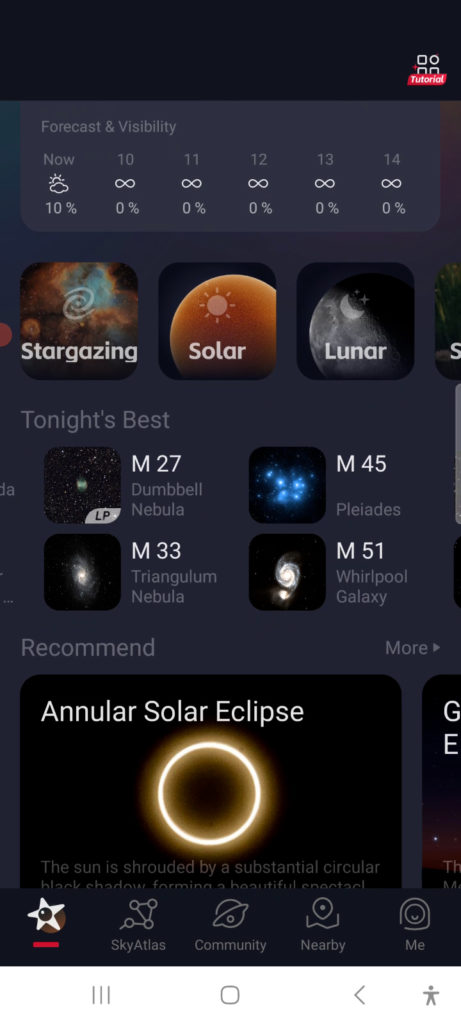
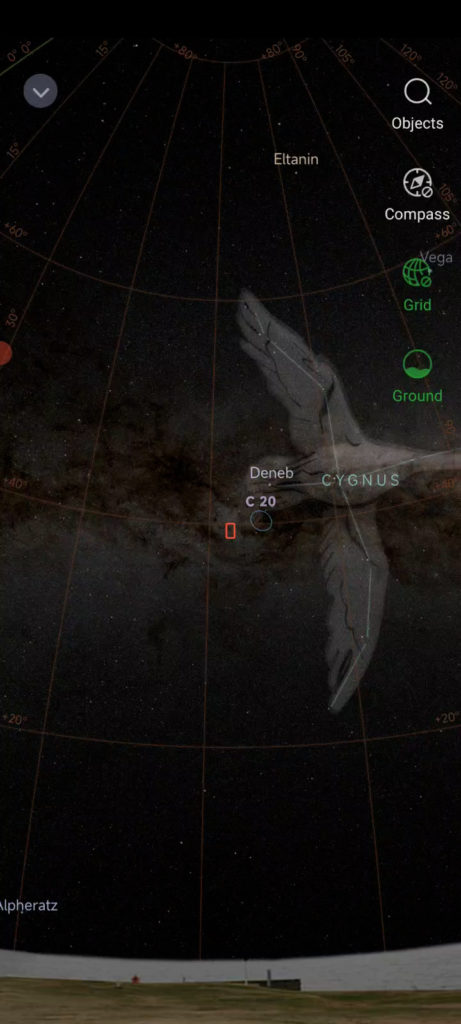
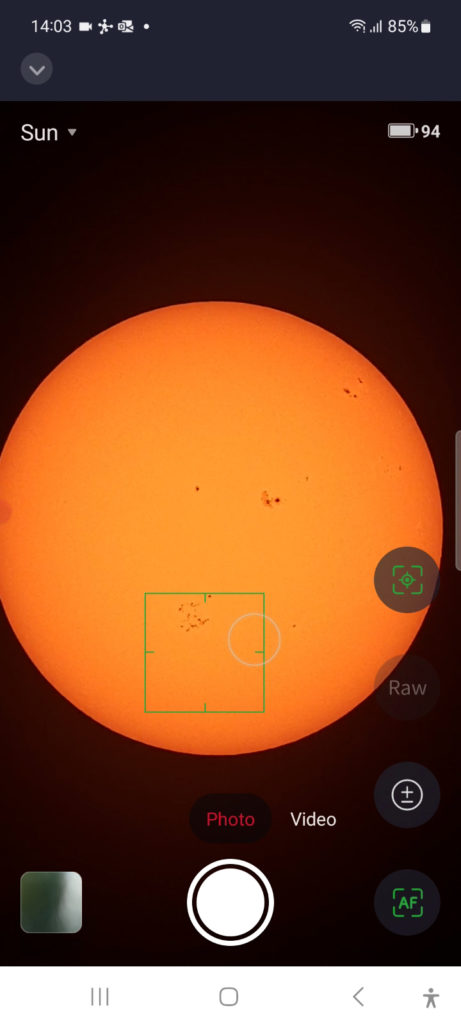
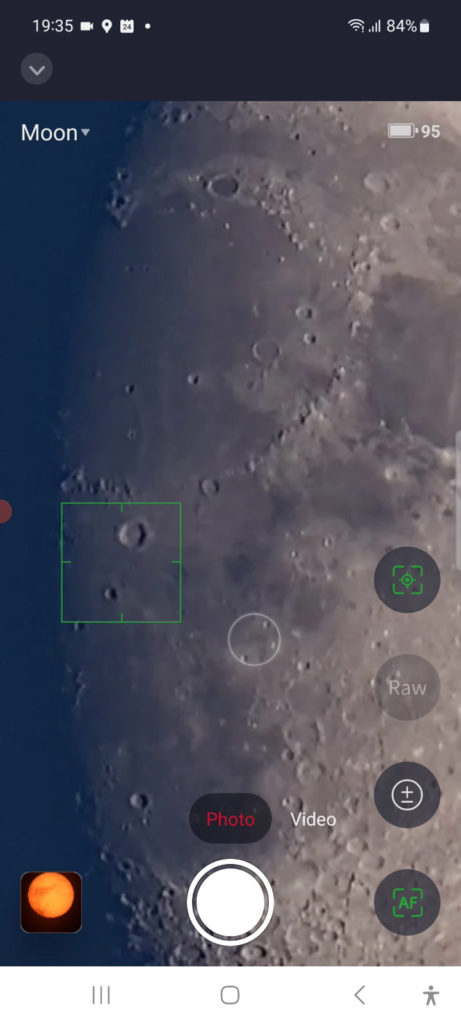
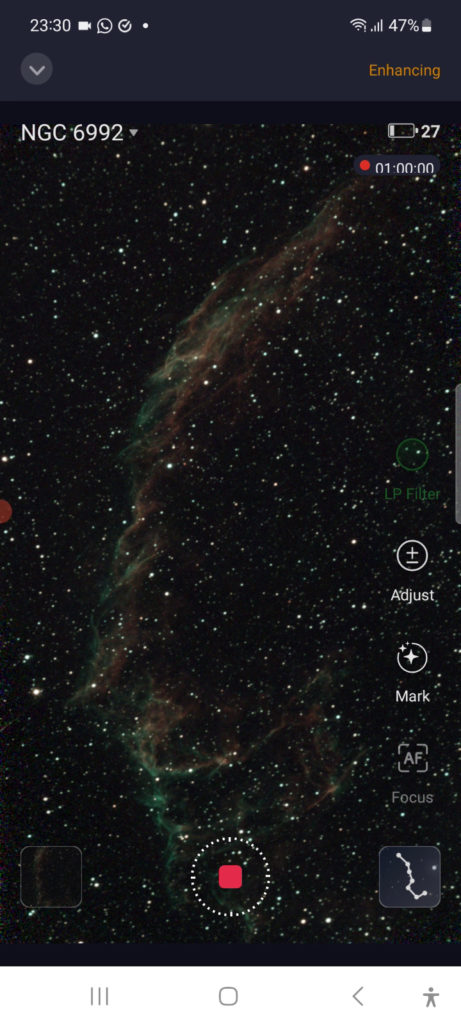
Singularity APP for the Vaonis Smart Telescopes
Vaonis presents the Singularity app, a robust competitor to the Seestar app. The main screen offers a comprehensive weather forecast, highlights impending astronomical events, and provides articles aiding users in operating Vaonis smart telescopes and image processing. Additionally, the app facilitates accessory purchases through a direct link to the Vaonis shop.
Under the exploration tab, users encounter recommended targets, and categorized listings of celestial objects, constellations, Messier objects, and stars. Notably, the constellation feature suggests noteworthy targets within constellations, providing details on observation time, object direction, altitude, and extensive information about the chosen target.
Vaonis telescopes undergo a brief initialization process before automatically slewing to the target, performing autofocus, and offering live feeds on connected smart devices. The solar mode, requiring a solar filter for Sun observation, includes a feature illustrating the Sun’s size from different planets. The app supports collaborative observation, allowing friends or family members to join, observe, and even take control of the telescope remotely.
The “plan my night” option lets users schedule observation sessions, and a distinctive covaLENS panorama mode captures up to 4x the native field of view for larger objects like nebulae. The Singularity app is user-friendly, and designed with novice astronomers in mind. For an in-depth tutorial and review of the Singularity app, click here.
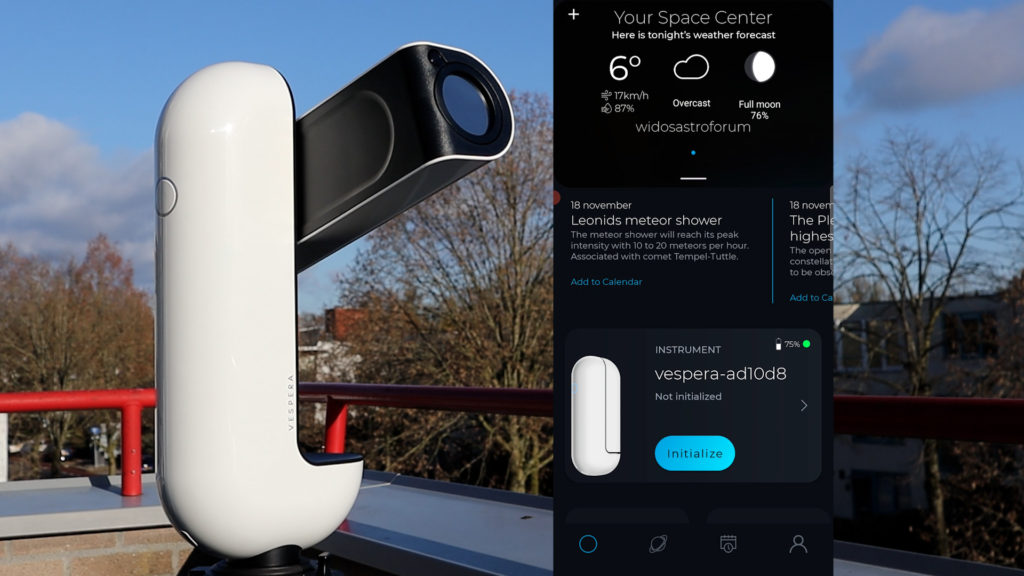





Dwarflab APP (Dwarf II)
The Dwarflab app received a relevant update in early 2024. Designed for nature and wildlife photography, the app displays live views from its wide-angle and telephoto lenses upon connection. Its standout feature is the seamless switch between these lenses, useful for finding and capturing moving subjects like wildlife. The joystick-like button controls telescope movement, and a speed dial adjusts slewing speed. The automatic tracking option, though somewhat inconsistent, allows following moving subjects. However, the WiFi range is somewhat limited, requiring close proximity to the Dwarf II to control the telescope. The app also supports photo, video, and timelapse options, which function well for daytime photography.
The astrophotography mode is functional but less user-friendly than Singularity or Seestar apps. Manual steps, like taking dark frames for calibration, precede night use. The calibration process involves manually positioning the Dwarf II and focusing on a bright starfield and hitting “calibrate” after which the Dwarf II will undergo a number of steps to assess its position. The updated astrophotography menu provides access to many solar system and deep-sky objects, but lacks detailed information. After selecting a target, the Dwarf II automatically slews to the target, requiring a minute or two to calibrate its tracking. Users must then manually set exposure time, gain, and infrared filter preferences in the settings menu before hitting record to photograph objects.
In contrast to Seestar and Singularity apps, Dwarflab’s astrophotography mode demands more manual input, from calibration to exposure settings. While it offers flexibility, users must invest time and effort in the setup process, making it a distinct experience compared to the more automated alternatives. Here’s a link to my review of the Dwarf II telescope, including the Dwarflab app (1st version).

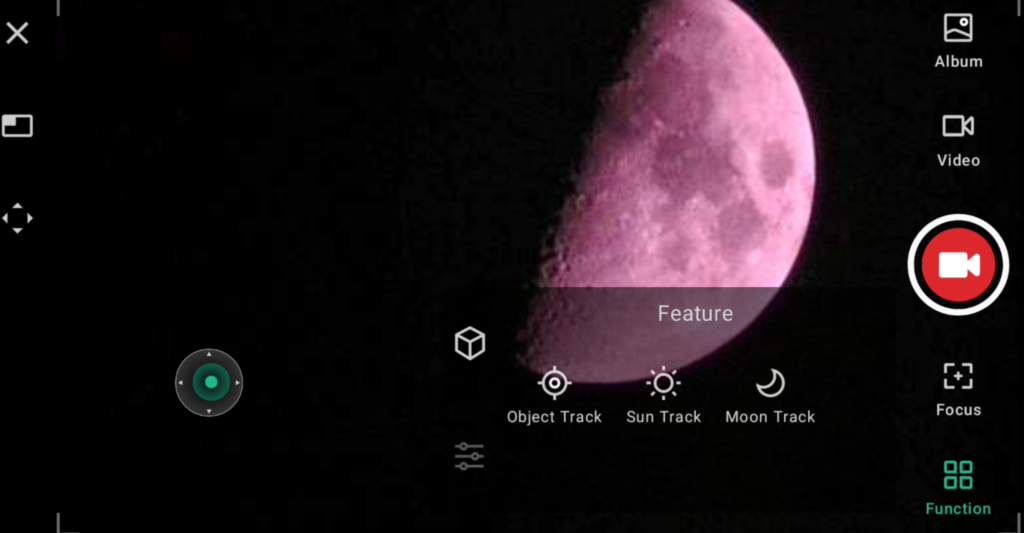
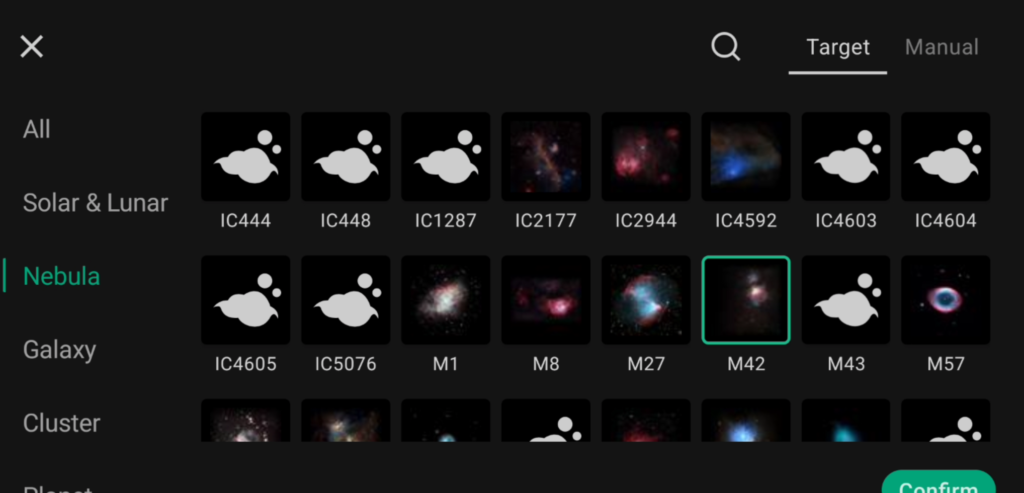
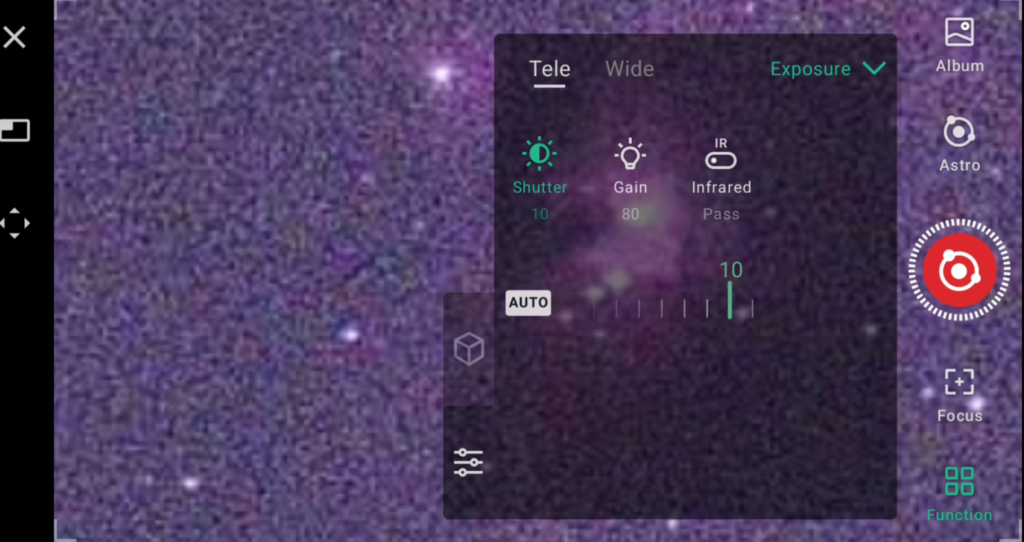
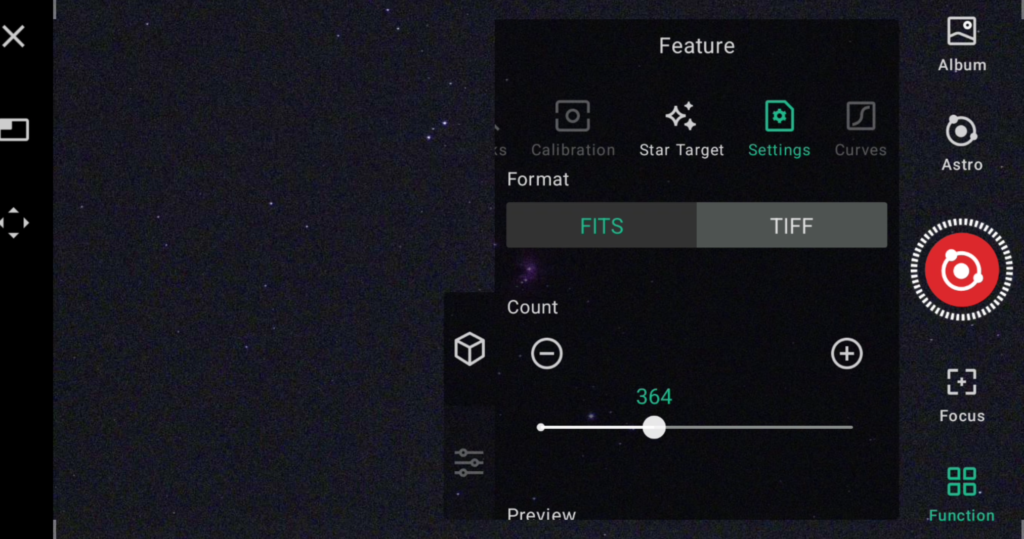
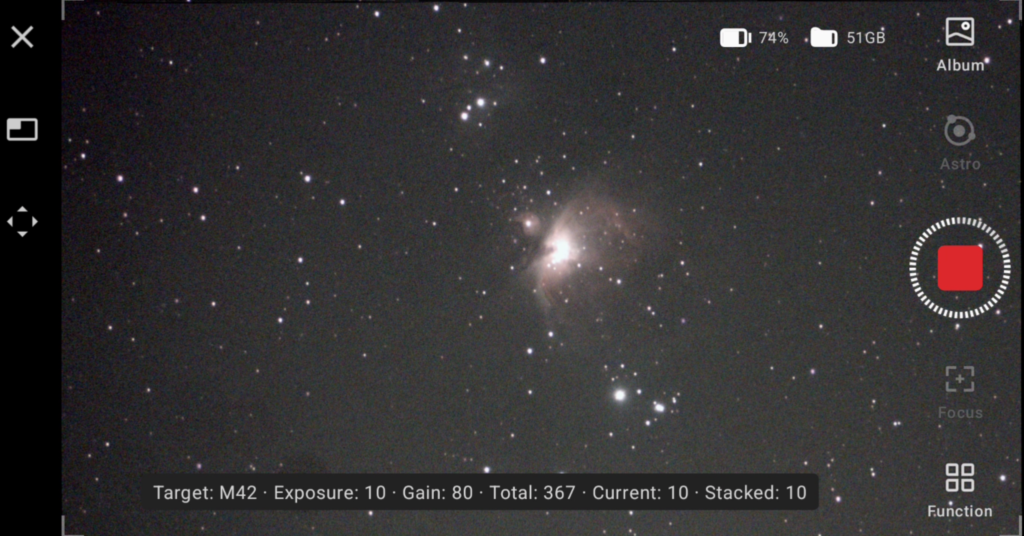
Unistellar APP (EVscope 2, EQuinox 2)
Although I haven’t personally tested the Unistellar APP with the EVscope or Equinox 2, feedback from friends who have used it suggests it’s well-suited for beginners. The app features a user-friendly start screen with recommended targets and a guide to assist first-time users of Unistellar smart telescopes. It includes a section showing recommended objects for viewing, categorized under solar system, nebula, galaxies, star clusters, and stars. The catalog section provides a comprehensive database of all objects, with an option for manual searches. Clicking on an object reveals its description and location in the night sky, along with the time it will be visible above the horizon.
Before connecting the Unistellar smart telescope (e.g., EVscope 2, Equinox 2), users should be aware that reflector telescopes require manual focusing. Depending on the smart telescope, an eyepiece or a Bahtinov focus mask attached to the telescope tube’s front can be used to collimate and focus the telescope.
The Unistellar app enables connections with up to 10 smart devices. With the app downloaded and connected to the Unistellar Wi-Fi network, users can choose from a vast selection of 5,000 celestial objects. The app streamlines the selection process by highlighting the most well-positioned and brightest objects. Once an object is selected, the Unistellar eVscope 2 automatically slews to it, capturing a series of brief exposures that gradually build up an image through stacking. The app also facilitates engagement with the citizen astronomer community, offers opportunities to sign up for science missions, and features a gallery showcasing your latest pictures.
Initiating the image capture process allows users to observe the progressive improvement in image quality within the app. While capturing a series of images over five minutes provides a decent representation of a galaxy, waiting for an hour reveals astonishing details, such as spiral arms and dust lanes. The telescope exhibits commendable reliability, with minimal app crashes, dropouts, or Wi-Fi issues.
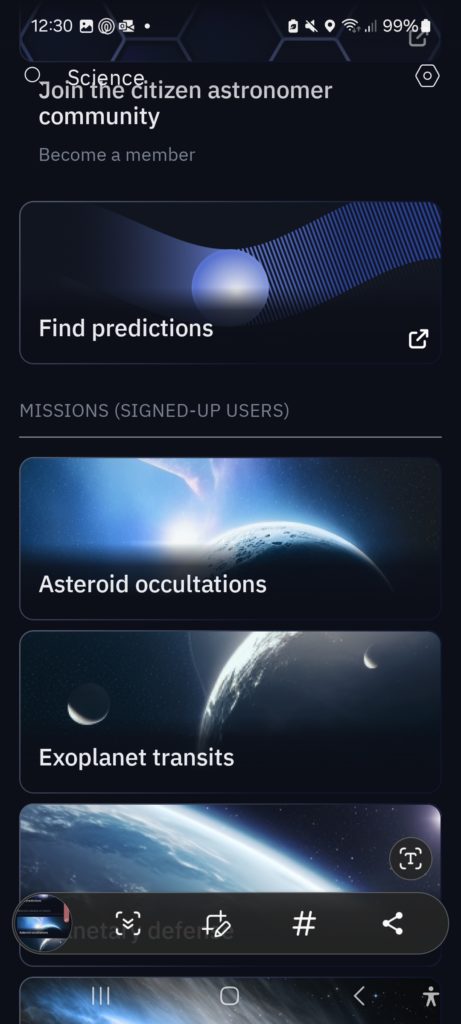
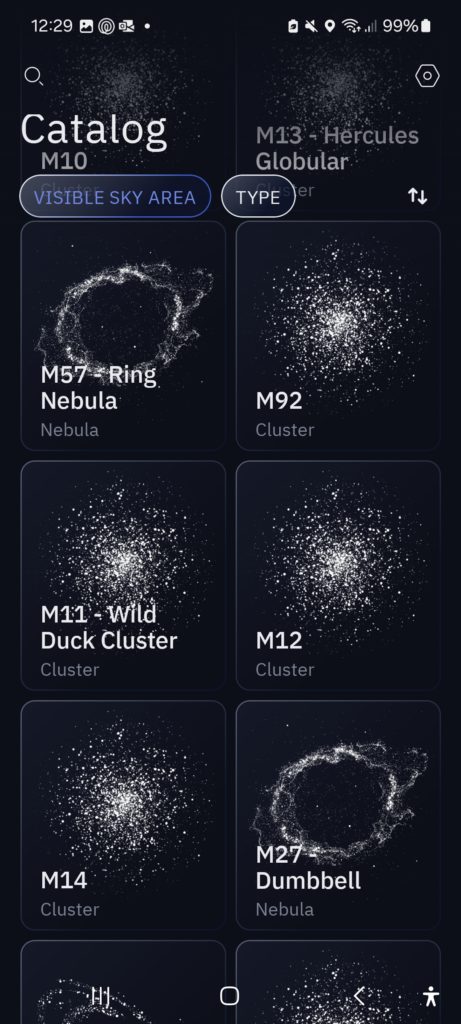


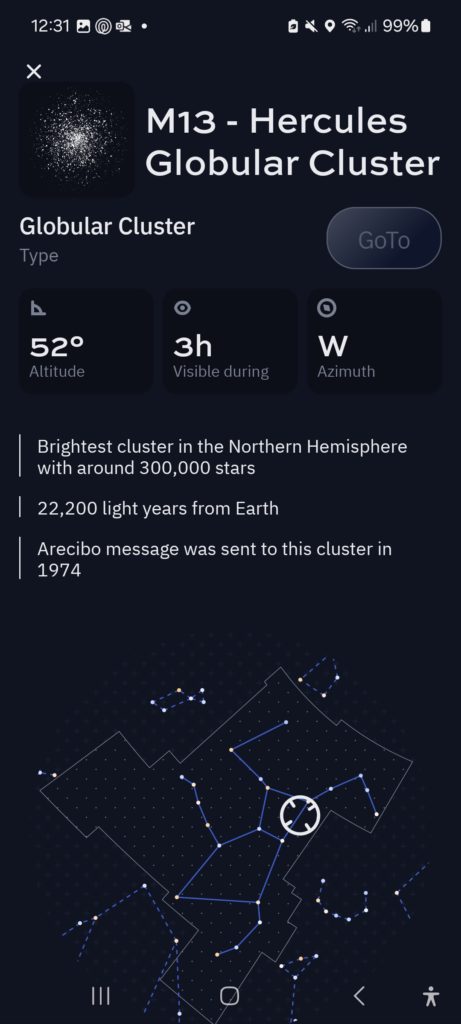
back to criteria overview
Photo & Video formats
All smart telescopes in this overview support multiple photo formats like JPEG, FITS, and TIFF files. JPEG (Joint Photographic Experts Group) utilizes lossy compression, discarding some data to achieve smaller file sizes. Because of their limited size, JPEG files can be readily shared with friends and family, or on social media.
In contrast, FITS (Flexible Image Transport System) files employ lossless compression, crucial for preserving scientific data in astronomy, and are stored in a 16-bit format, which provides more color depth. These higher-quality FITS files are often used for post-processing, where you can (re-)stack multiple images of a celestial object and recreate your final image to your liking. While smart telescopes do the stacking and processing of pictures automatically for you, there’s also the option to download the FITS files on your computer and use third party Astro-processing software to enhance your pictures. Post-processing Astro-pictures has its learning curves, but it gives you more autonomy to create astrophotography pictures to your liking.
TIFF (Tagged Image File Format) files are used by smart telescopes to save a final, stacked picture of a celestial object in 16-bit lossless compression, preserving the image quality and true color of the picture. They are also better suited for post-processing images, as compared to JPEG files This creates two options; you can either recreate the entire stacking process by restacking the individual fits files, or you can take the automatically stacked TIFF file for further processing.
In addition to this, the Dwarf II and Seestar S50 also support video. The Dwarf II includes an option to take MP4 videos, while the Seestar S50 stores videos in MP4 and AVI RAW format. MP4 files have a smaller file size due to the advanced compression algorithms and are great for immediate sharing. The Seestar S50 also stores solar and lunar videos in uncompressed 16-bit AVI RAW, which is excellent for manual post-processing using third party software tools like Autostakkert! and Registax.Videos are also exciting as it provides you with the opportunity to record lunar and solar eclipses.
back to criteria overview
Image Quality
We can talk all we want about the quality of the telescopes, but in the end, real-world pictures are the best way to show what a telescope can do. So let me show you the pictures I took with the Seestar S50, the Dwarf II, and the Vaonis Vespera (classic edition). Please note that these images were taken in an urban environment (Bortle 7), showing you what is possible from a light-polluted backyard. All deep-sky objects are tracked for about 60 to 90 minutes. Do keep in mind that the quality of your night sky, the atmospheric conditions on a particular imaging night, and the imaging time of deep-sky objects are all factors that influence your picture quality beyond the quality of the telescope.
Note that the pictures of the Vaonis Vespera are from the classic edition and not the Vespera II or Vespera Pro. Vaonis is sending me the Vespera II, so stay tuned for a review. Moreover, I didn’t yet test any Unistellar smart telescope, but some pictures on astrobin confirm that Unistellar smart scopes are mainly used for small objects, like distant galaxies and globular star clusters.
ZWO Seestar S50 – my real-world pictures in an urban area
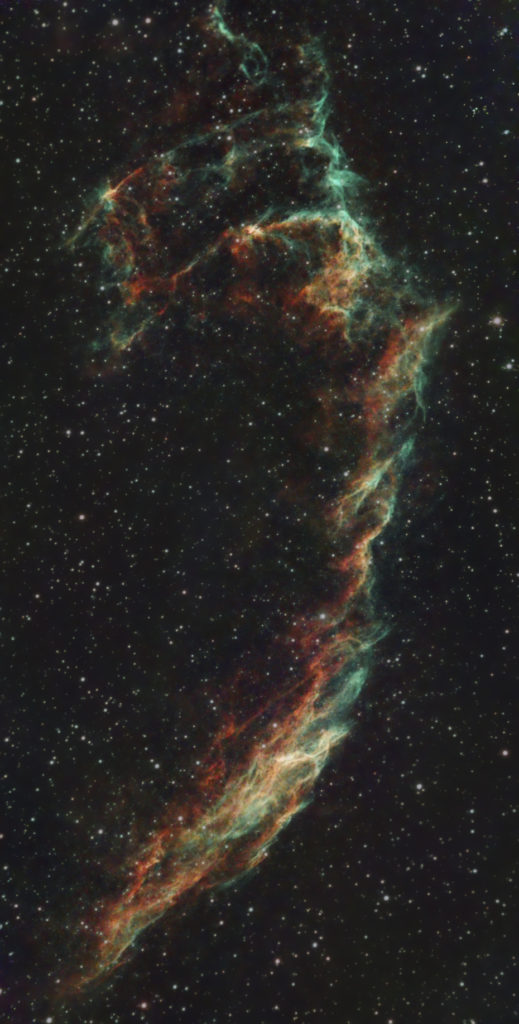
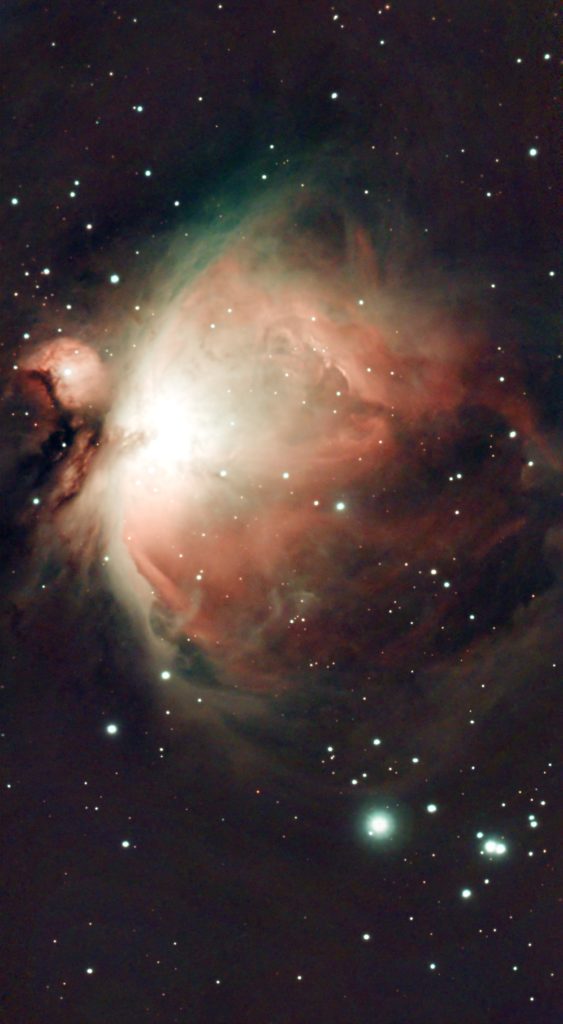
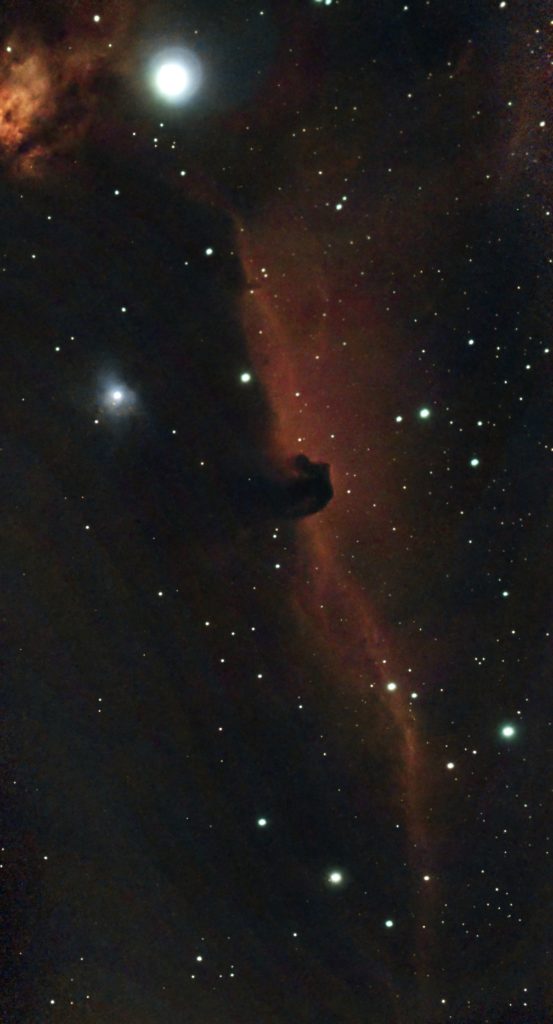
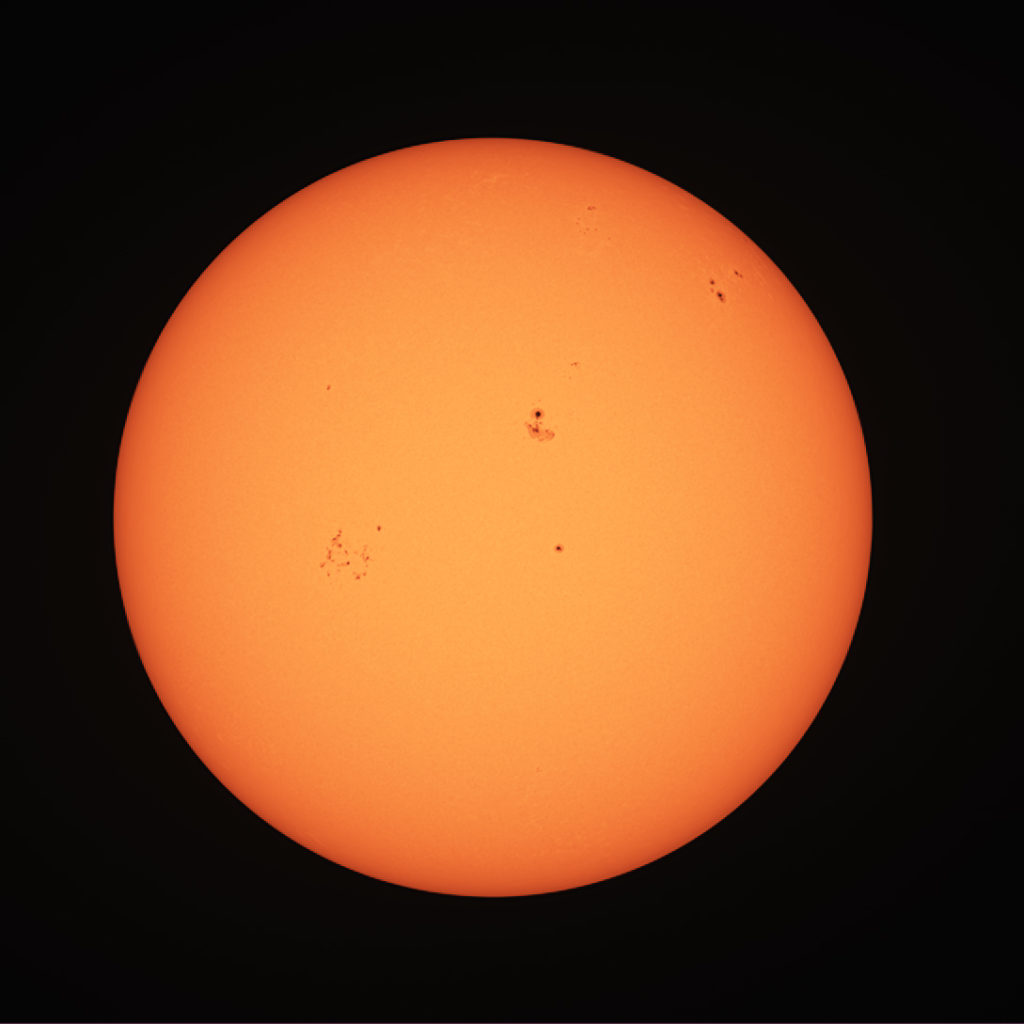
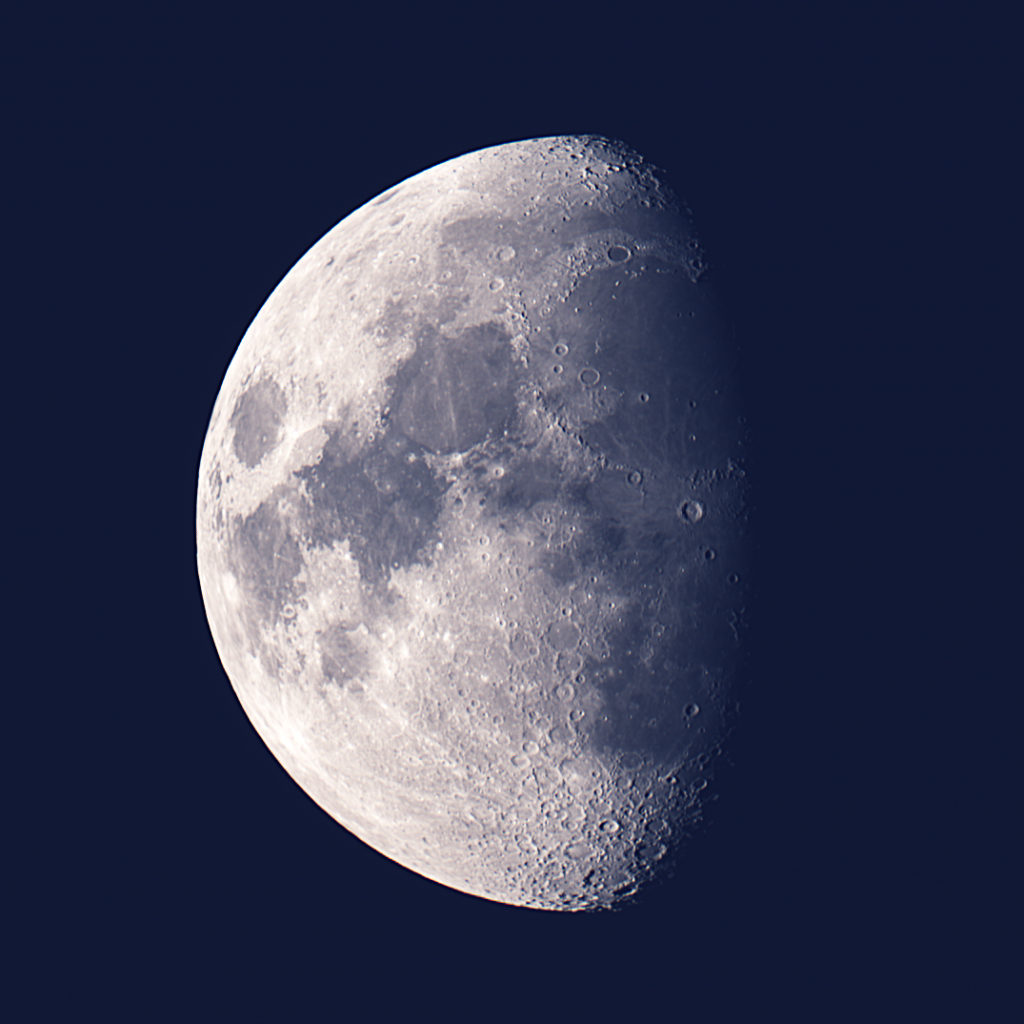
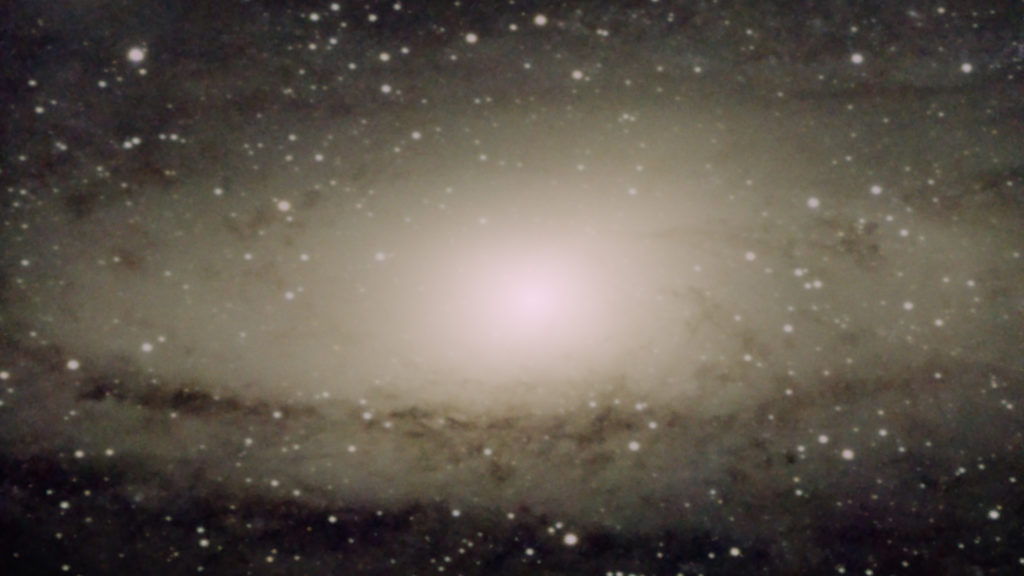
For more real-world pictures of the Seestar S50 from other users, check out Astrobin
Vaonis Vespera (classic) – my real-world pictures in an urban area

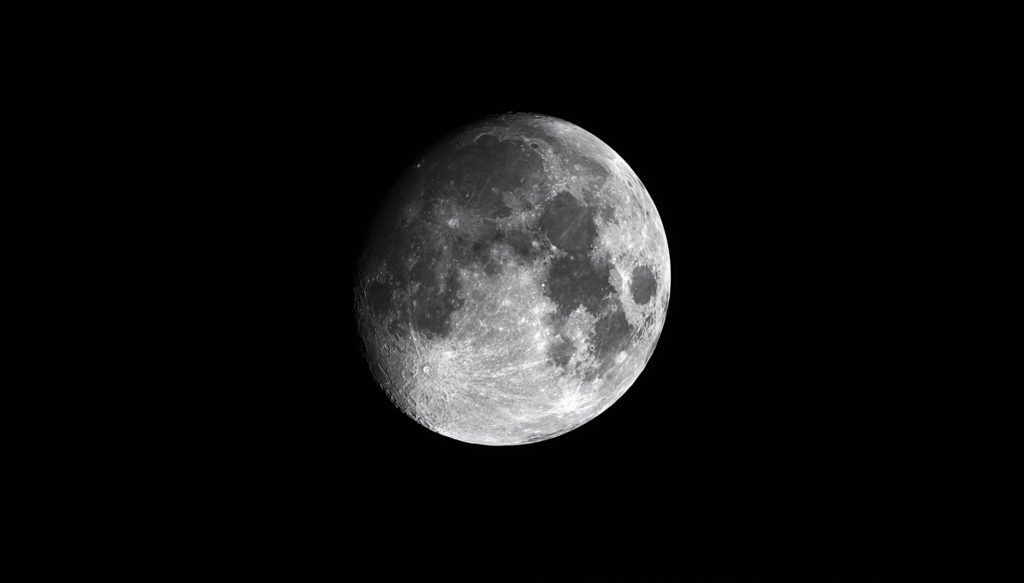
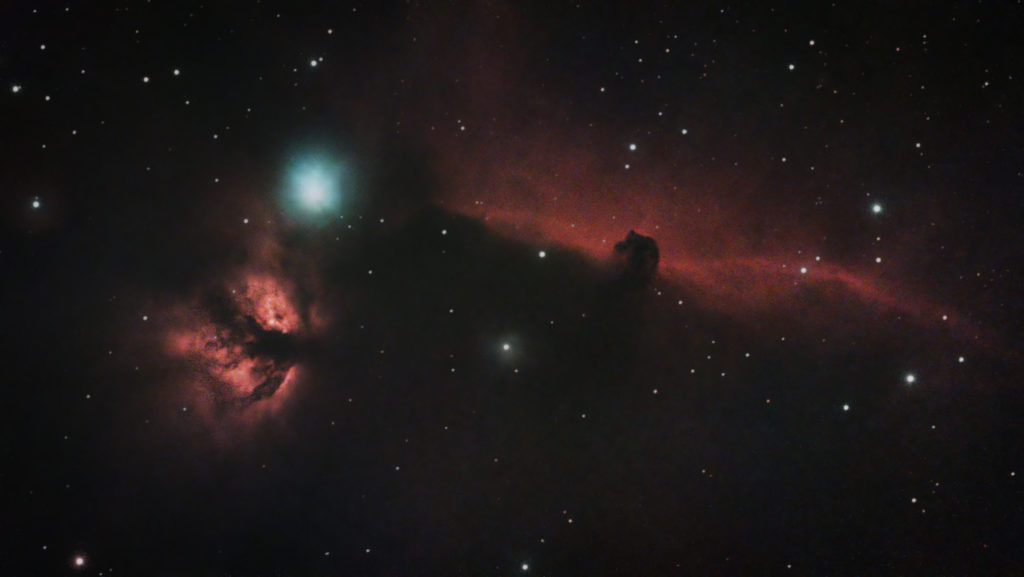
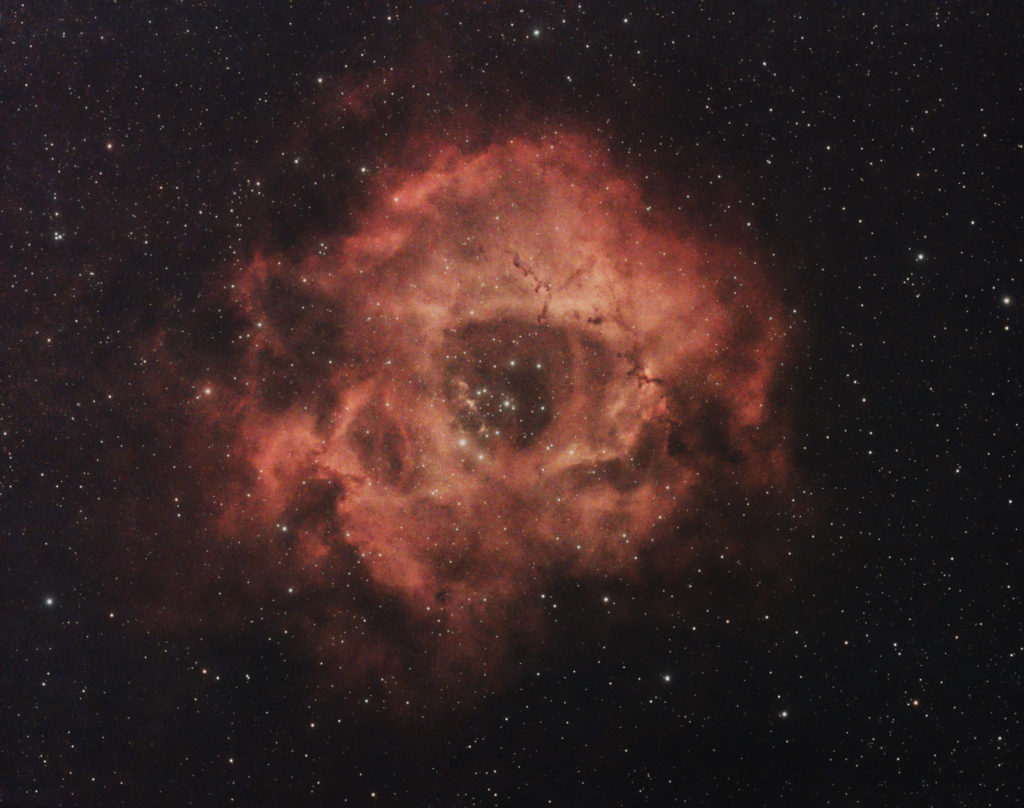

For more real-life pictures, check out Astrobin
DWARF II – my real-world pictures in an urban area
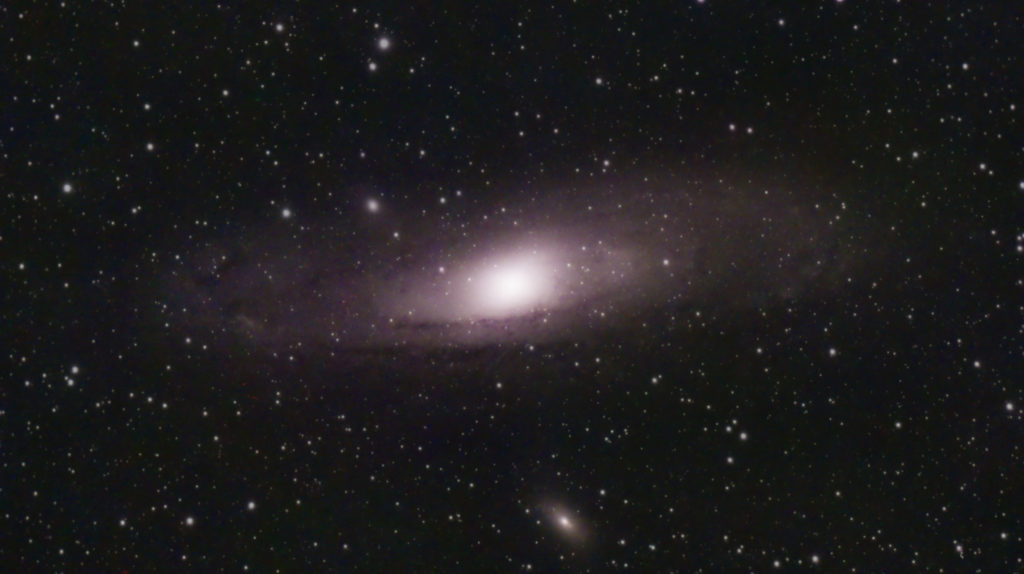


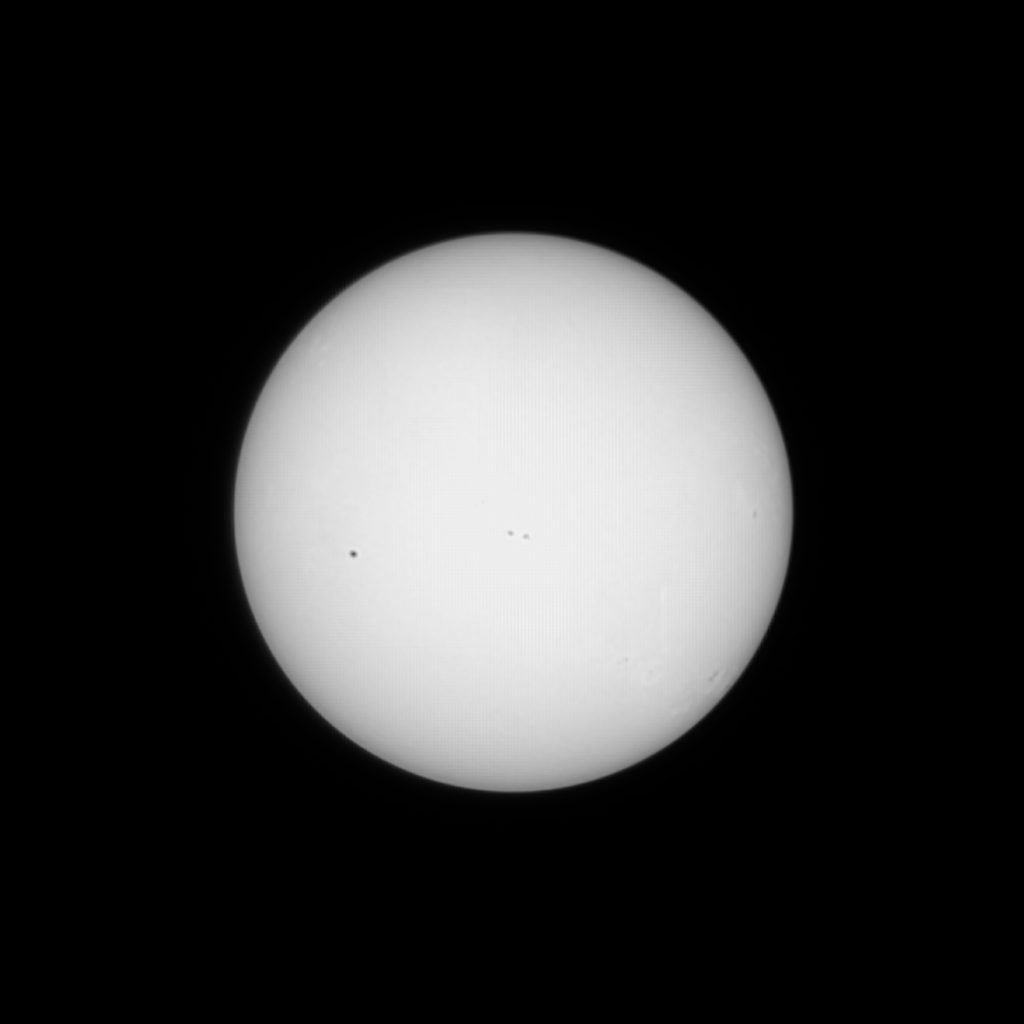
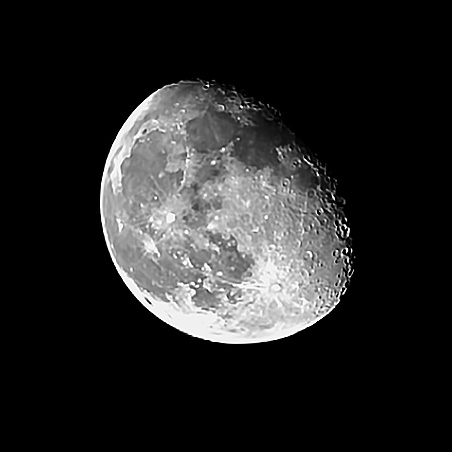
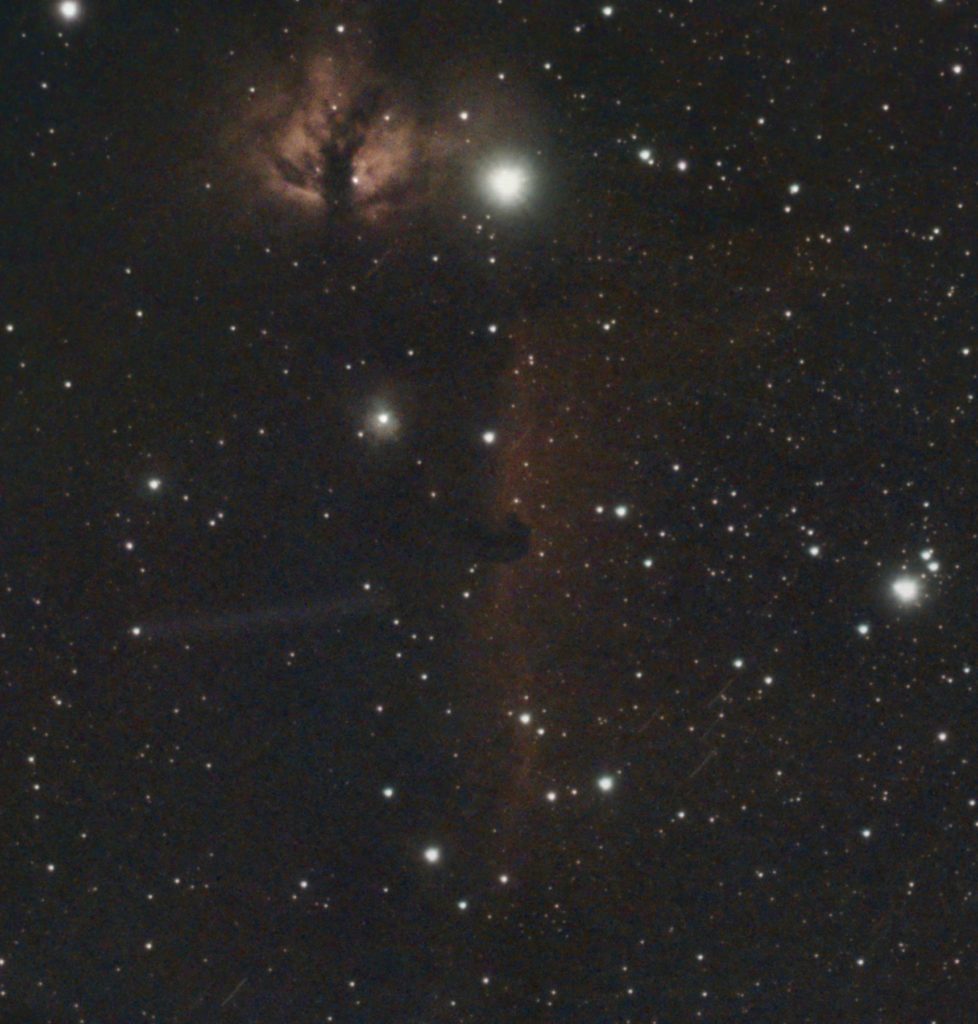
For more real-life pictures from other Vespera owners, check out Astrobin, and for the Vaonis Stellina, click here.
Unistellar EVscope 2 / Equinox 2
I did not yet have the opportunity to test the newest versions of the Equinox 2 and EVscope 2, but you can find real-world pictures shared by other users for the Equinox 2 on Astrobin here, and for the EVscope 2 here.
back to criteria overview
Storage capacity and Battery life
All smart telescopes have internal storage capacity to save your photos, which can be transferred to your computer, smartphone, or tablet after an imaging session. More storage capacity is useful as it relates to less time needed to transfer files to other devices and delete images to free up space for the next imaging session. In that respect, the Vaonis Vespera Pro stands out with a storage capacity of 225GB; the Seestar S50, Unistellar Equinox 2, and EVscope 2, as well as the Dwarf II Smart telescopes, all have a 64GB storage capacity. The Vaonis Vespera II only has 25 GB of storage, and the Vaonis Stellina and classic version of the Vespera only have 10GB.
All smart telescopes have internal batteries that can be recharged after an imaging session. Longer battery life is useful so you don’t have to worry about forcefully stopping an imaging session because your smart telescope runs out of battery. In that respect, the Vespera Pro and Unistellar Equinox 2 boast 11 hours of battery life, followed by the Unistellar EVscope 2 rated at 10 hours. The classic Vaonis Vespera lasts for 8 hours, the Seestar S50 boasts 6 hours, and the Vaonis Stellina has about 5 hours of battery life. Finally, the Vaonis Stellina II and the Dwarf II only run for 4 hours before needing a recharge. The Dwarf II is the only telescope with a removable battery, making it easy to swap batteries and continue your session. Most smart telescopes can be recharged using a USB-C cable, except for the Classic (first) edition of the Vaonis Vespera and Stellina, which have a proprietary cable that comes with the telescope for recharging.
back to criteria overview
Weight and Size
The portability and size of these smart telescopes may also be important, especially if you’re planning to take them on to remote places for stargazing. The Vaonis Stellina is the heaviest telescope at 11kg, followed by the Unistellar EVscope 2 at 9kg, and the Unistellar Equinox 2 at 7kg. Significantly more portable are the Vaonis Vespera models at 5kg. The Seestar S50 is only 3kg, and by far the most portable device is the Dwarf II smart Telescope, weighing only 1.2 kg.
As for size, the Unistellar Evscope 2 (77 x 33 x 26 cm) and Equinox 2 (65 x 23 x 12 cm) are pretty bulky, although they do fit in a backpack, followed by the Vaonis Stellina (49 x 39 x 13 cm). All models of the Vaonis Vespera are significantly smaller (48 x 20 x 9 cm) and easily fit in a backpack. Finally, the Seestar S50 (14 x 13 x 26 cm) and the Dwarf II Smart Telescope (20 x 5 x 13 cm) are the most portable smart telescopes in this overview.
back to criteria overview
Astrophotography filters
Good quality astrophotography filters play a crucial role in mitigating the impact of light pollution in urban settings while enhancing the nebulous details in your astronomical images. Additionally, employing a solar filter is imperative for safeguarding your smart telescope by reducing solar energy, and enabling the observation of sunspots. Remember, never gaze directly at the sun, as it poses a risk of blindness.
The Seestar S50 is equipped with an internal light pollution filter to counter urban light pollution and includes a solar filter without any extra charge. For an enhanced experience, the Dwarf II offers a deluxe version at an additional cost of around $120, featuring a 1.25″ solar filter and a 1.25″ ultra-high contrast filter. It is advisable to skip the UHC filter from Dwarflab and opt for the superior 1.25″ dual-band filter (e.g. from ZWO or Optolong), which can be easily mounted on the Dwarf II.
The Vaonis Vespera provides customization options with separately purchasable dual-band, light pollution, and solar filters, ranging from $199 for a solar filter to $399 for a dual-band filter. Not cheap, but the filters do their job well. The Vaonis Stellina comes with an internal light pollution filter, and a solar filter, available for $199.
Unistellar exclusively offers a smart solar filter for the Evscope 2 and Equinox 2, priced at $249. Unistellar asserts that its software is crafted to combat light pollution. While they may employ techniques like dynamic background extraction, background neutralization, and color balancing in their capturing software, like I do when I’m processing my astro-pictures, the specifics remain undisclosed…
back to criteria overview
Final verdict
Best Smart Telescope for $500; Seestar S50 vs Dwarf II

In this particular price range, we have two notable options: the ZWO Seestar S50 and the Dwarf II Smart Telescope by Dwarflab. For those focusing on astrophotography, my recommendation leans towards the ZWO Seestar S50, and here’s why. The superior quality of its triplet refractor telescope optics surpasses the telephoto lens of the Dwarf II. Despite the Seestar S50 having a 2 MP camera sensor, in contrast to the Dwarf II’s 8 MP, its higher aperture and focal length contribute to superior image quality and resolution when capturing celestial objects. Noteworthy is the inclusion of a solar filter and an internal dual-band light pollution filter with the Seestar S50 at no additional cost, enriching nebulosity and combating light pollution.
The Seestar app is exceptionally user-friendly, especially catering to beginners. It provides predefined modes for solar, lunar, planetary, and deep-sky observations. With its auto-finding, auto-focus, and auto-enhancing features, the Seestar ensures a seamless and enhanced stargazing experience on smartphones or tablets, making it accessible even for those new to astronomy. In contrast, the astrophotography options of the Dwarf II, though improved with the 2.0 update, involve more manual steps for users, rendering it comparatively less user-friendly or “smart” than the Seestar S50.
It’s worth highlighting that the Dwarf II is a versatile device suitable for nature, wildlife, and astrophotography. Its distinctive capability to switch between telephoto and widefield lenses, enabling the capture of animals or moving objects in the telephoto’s field of view, adds to its adaptability. If your priorities revolve around portability and versatility for wildlife, nature, and some astrophotography, the Dwarf II smart telescope may still be the ideal choice. For a comprehensive review of the Seestar S50, click here, and for an evaluation of the Dwarf II smart telescope, click here.
The ZWO Seestar S50 can be purchased directly at ZWO, and at Agena Astro (USA/WW), High Point Scientific (USA/WW), and Astroshop (EU/WW).
For 5% discount, buy the Dwarf II Smart Telescope directly from the DWARFLAB website and use my coupon code: WidosAstroForum.
The DWARF II is also available at High Point Scientific (USA/WW), and Astroshop (EU/WW)
Best Smart Telescope for $1500; Vaonis Vespera vs Vespera II
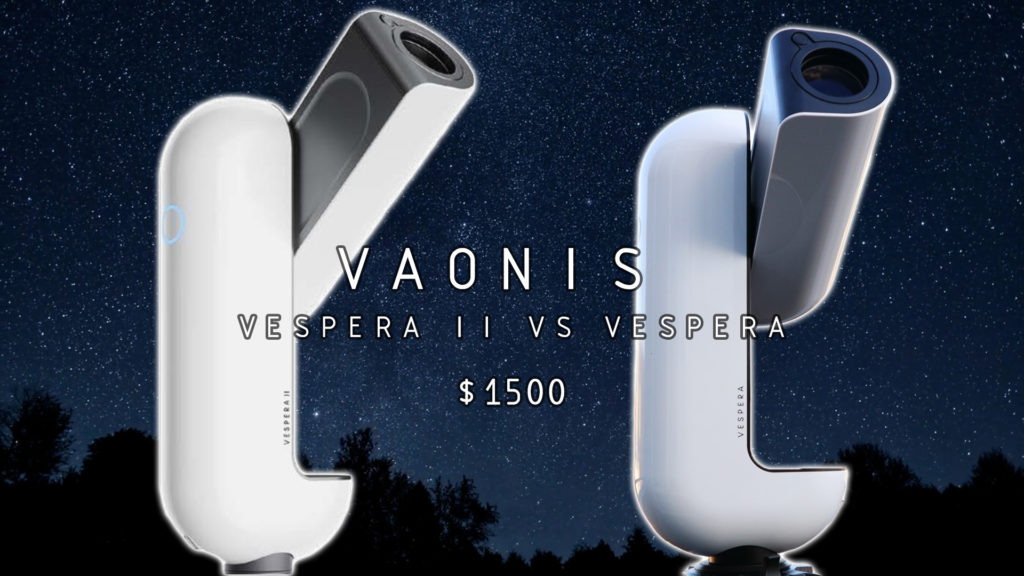
In this price bracket, we have both the Vaonis Vespera and its upgraded version, the Vaonis Vespera II. The Vespera II carries a $100 premium compared to the classic edition of the Vaonis Vespera. For this additional cost, you’ll enjoy a slightly enhanced resolution and magnification capability with the Vespera II in comparison to the classic Vespera, owing to its advanced Sony IMX 8.3 camera sensor and a 250mm focal length. Additionally, the Vespera II boasts an expanded storage capacity of 25 GB and is chargeable with a standard USB-C cable, whereas the classic Vespera, with a 10 GB capacity, requires recharging with a proprietary cable. Intriguingly, the Vespera offers an 8-hour battery life, while the newer Vespera II can only operate for 4 hours before requiring a recharge. In essence, both telescopes share many similarities, and your decision hinges on the slightly improved image quality and storage capacity of the Vespera II versus the extended battery life of the original Vespera.
What sets the Vaonis Vespera apart is its distinctive panorama mode, named CovalENS, allowing you to capture images up to 4 times its native field of view of the night sky. This feature proves particularly valuable when capturing larger celestial objects such as expansive nebulae in our Milky Way and the Andromeda Galaxy. The panorama mode generates a high-resolution image of these objects, requiring a significant time investment (hours) to obtain a top-quality result. Currently, no other smart telescope has integrated such a panorama feature, setting Vaonis apart from its competition. The Singularity APP is among the best, most versatile, and easy-to-use smart telescope APPS on the market today. Additional accessories, including solar filters, light pollution filters, dual-band (nebulae) filters, tripods, and backpacks for the Vaonis Vespera, are available at an extra cost.
The Vaonis Vespera (classic edition) is available at Agena Astro (USA/WW), High Point Scientific (USA/WW), and Astroshop (EU/WW)
The Vaonis Vespera II is available at Agena Astro (USA/WW), High Point Scientific (USA/WW), and Astroshop (EU/WW).
Best Smart Telescope for $2500; Vaonis Vespera Pro vs Unistellar Equinox 2

Within this price range, the choice lies between the Vaonis Vespera Pro and the Unistellar Equinox 2, each presenting distinctive features. The Equinox 2 takes the lead in resolution, attributed to its larger aperture (114mm compared to Vespera Pro’s 50mm) and longer focal length (450mm compared to Vespera Pro’s 250mm). However, it’s crucial to acknowledge that the Equinox 2, being a Newtonian reflector, requires manual focusing and collimation due to its design. On the contrary, the Vespera Pro, with its quadruplet refractor telescope design, eliminates the need for maintenance or focusing, providing a more user-friendly experience for beginners.
The Unistellar Equinox 2 offers a narrow field of view, suitable for high magnification of smaller celestial objects. While advantageous for capturing details of distant galaxies and the cores of large nebulae, it may fall short when attempting to photograph larger entities like the Andromeda Galaxy due to its limited field of view. In contrast, the Vaonis Vespera Pro boasts a native field of view approximately four times larger than the Equinox 2, augmented by a panorama mode (covaLENS) that captures four times its native field of view—ideal for imaging expansive celestial bodies.
In terms of storage capacity, the Vaonis Vespera Pro excels with 225 GB compared to the Equinox 2’s 64 GB. Both telescopes feature a commendable 11-hour battery life, enabling continuous imaging throughout the night. The Vespera Pro stands out as more portable at 5 kg compared to the Equinox 2’s 7 kg and is approximately 18 cm (7 inches) shorter. Additional solar, dual-band, and light pollution filters are available for the Vespera Pro at an extra cost, while Unistellar provides an optional solar filter at an additional cost and incorporates unique algorithms to extract light pollution in Astro-images. With the Vaonis Vespera Pro set to be released in May 2024, the choice hinges on factors such as resolution, ease of use, field of view, storage capacity, portability, and the availability of additional filters based on individual preferences and priorities.
The Vaonis Vespera Pro will be available from May 2024 onwards, and can be pre-ordered at High Point Scientific (USA/WW).
The Unistellar Equinox 2 is available at High Point Scientific (USA/WW), and Astroshop (EU/WW).
Best Smart Telescope for $3500 – $4500: Vaonis Stellina versus Unistellar EVscope 2

At this substantial price range, we encounter the Vaonis Stellina and the Unistellar EVscope 2. My ethical perspective, influenced by my passion for astrophotography and previous academic research experience, urges that if you’re willing to invest this much, it’s more beneficial to delve into learning about astrophotography and acquire a professional setup. Feel free to contact me at astroforumlive@gmail.com for more information. However, for those not inclined to dedicate time to learning astrophotography, the aforementioned options at a lower price point offer a significantly enhanced view of the night sky compared to simple naked-eye stargazing.
If you still aspire to acquire the pinnacle of smart telescopes, let’s delve into the details of the Vaonis Stellina and the Unistellar EVscope 2. The EVscope 2 boasts superior resolution, attributed to its larger aperture (114mm compared to Stellina’s 80mm) and longer focal length (450mm compared to Stellina’s 400mm). It’s essential to note that Newtonian reflectors like the EVscope 2 produce diffraction stars due to their design, necessitating manual focusing and collimation. In contrast, the Vespera Pro, with its quadruplet refractor telescope design, requires no maintenance or manual focusing, making it more user-friendly for absolute beginners.
The Unistellar EVscope 2 has a narrower field of view, accommodating only the Moon and the Sun (0.34°x 0.45°). While advantageous for high magnification of smaller objects, such as distant galaxies or the cores of large nebulae, it limits the capture of larger objects like the Andromeda Galaxy. On the other hand, the Vaonis Stellina offers a native field of view approximately two and a half times larger than the EVscope 2 and features a unique panorama mode (covaLENS) capable of capturing four times its native field of view, ideal for imaging larger celestial objects.
The EVscope 2 boasts superior storage capacity (64 GB compared to Stellina’s 10 GB) and a more extended battery life of 10 hours before requiring a recharge (vs Stellina’s 5 hours), allowing continuous imaging throughout the night. Both telescopes are relatively heavy, with the EVscope 2 weighing 9 kg compared to the Stellina’s 11 kg. Unistellar’s EVscope 2 is larger (77 x 33 x 26 cm vs Stellina’s 49 x 39 x 13 cm). Optional solar filters are available for both telescopes at an additional cost.
The Unistellar EVscope2 is available at High Point Scientific (USA/WW), and Astroshop (EU/WW)
The Vaonis Stellina is available at Astroshop (EU/WW)
Smart Telescope Comparison Table
| wdt_ID | Name | Price | USA1 | USA2 | EU | Telescope type | Glass / mirror type | Aperture | Focal Length | f/ratio | Sensor type | Resolution | Megapixels | Pixel size | Image scale | Field of View (Native) | Field of View (max) | Photo formats | Video formats | APP type | OS | connection | APP ease of use | Storage | Battery life | Data transfer | Size | Weight |
|---|---|---|---|---|---|---|---|---|---|---|---|---|---|---|---|---|---|---|---|---|---|---|---|---|---|---|---|---|
| 1 | Vaonis Vespera | 1.499,00 | Link | Link | Link | Quadruplet Refractor | S-FPL52 (ED) | 50 | 200 | 4,0 | SONY IMX 462 | 1920 x 1080 | 2,0 | 2,90 | 2,99 | 1.6°x0.9° | 3.2°x1.8° 2.4°x2.4° | jpg, fits, tiff | Singularity | Android, iOS | Wi-Fi | 5/5 | 10 | 8 | Proprietary | 48 x 20 x 9 | 5,0 | |
| 2 | Vaonis Vespera II | 1.590,00 | Link | Link | Link | Quadruplet Refractor | S-FPL52 (ED) | 50 | 250 | 5,0 | Sony IMX 585 | 3840 x 2160 | 8,3 | 2,90 | 2,39 | 2.5°x1.4° | 4.33°x2.43° 3.25°x3.25° | jpg, fits, tiff | Singularity | Android, iOS | Wi-Fi | 5/5 | 25 | 4 | USB-C | 48 x 20 x 9 | 5,0 | |
| 3 | Vaonis Vespera Pro | 2.499,00 | Link | Quadruplet Refractor | S-FPL52 (ED) | 50 | 250 | 5,0 | Sony IMX 676 | 3536 x 3536 | 12,5 | 2,00 | 1,60 | 1.6°x1.6° | 3.4°x2° 2.56°x2.56° | jpg, fits, tiff | Singularity | Android, iOS | Wi-Fi | 5/5 | 225 | 11 | USB-C | 48 x 20 x 9 | 5,0 | |||
| 4 | Vaonis Stellina | 3.999,00 | Link | ED Doublet Refractor | S-FPL51 (ED) | 80 | 400 | 5,0 | Sony IMX 178 | 3096 x 2080 | 6,4 | 2,40 | 1,24 | 1°x0.7° | 2° x 1,4° 1,7° x 1,7° | jpg, fits, tiff | Singularity | Android, iOS | Wi-Fi | 5/5 | 10 | 5 | Proprietary | 49 x 39 x 13 | 11,0 | |||
| 5 | Seestar S50 | 499,00 | Link | Link | Link | APO triplet Refractor | (ED) | 50 | 250 | 5,0 | SONY IMX 462 | 1080 x 1920 | 2,0 | 2,90 | 2,39 | 0.7°x1.3° | 0.7°x1.3° | jpg, fits, tiff | MP4, RAW | Seestar | Android, iOS | Wi-Fi | 5/5 | 64 | 6 | USB-C | 14 x 13 x 26 | 3,0 |
| 6 | Dwarf II | 459,00 | Link | Link | Telephoto lens | photolens | 24 | 100 | 4,2 | Sony IMX 415 | 3840 x 2160 | 8,0 | 1,45 | 2,99 | 3.2°x1.8° | 3.2°x1.8° | jpg, fits, tiff | MP4 | Dwarflab | Android, iOS | Wi-Fi | 3/5 | 64 | 4 | USB-C | 20 x 5 x 13 | 1,2 | |
| 7 | Unistellar EVscope 2 | 4.966,00 | Link | Link | Newtonian Reflector | Mirror | 114 | 450 | 4,0 | Sony IMX 347 | 2088 x 1536 | 7,7 | 1,45 | 0,66 | 0.34°x 0.45° | 0.34°x 0.45° | jpg, fits, tiff, png | Unistellar | Android, iOS | Wi-Fi | 4/5 | 64 | 10 | USB-C | 77 x 33 x 26 | 9,0 | ||
| 8 | Unistellar Equinox 2 | 2.499,00 | Link | Link | Newtonian Reflector | Mirror | 114 | 450 | 4,0 | Sony IMX 347 | 2048 x 1536 | 6,2 | 1,45 | 0,66 | 0.34°x 0.45° | 0.34°x 0.45° | jpg, fits, tiff, png | Unistellar | Android, iOS | Wi-Fi | 4/5 | 64 | 11 | USB-C | 65 x 23 x 12 | 7,0 |
Hello greetings, I wanted to ask if the Seestar will have a pro version? with more aperture and longer focal length, greetings from Chile
Let’s wait and see. ZWO usually announces new product updates at AP conferences like NEAF, next one is in April 2024.
I was wondering if any of these can work while plugged into a battery pack. That would extend the battery life but I don’t know if that would interfere with any of the functionality.
Hi Scott, I tested the Seestar S50 and the Vespera classic/II, and they both work fine when an extra battery pack is plugged in.
They re-charge while imaging, no problem.